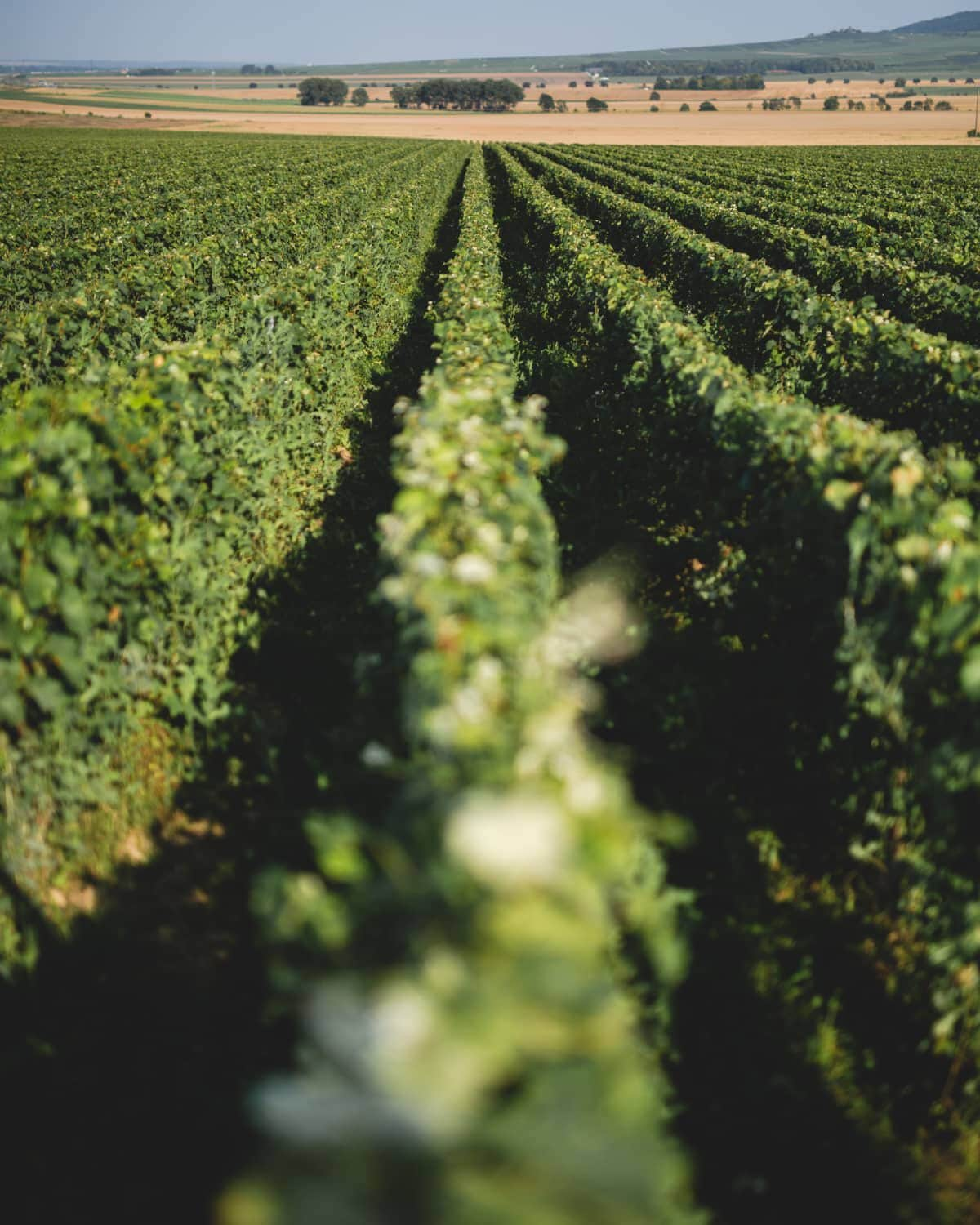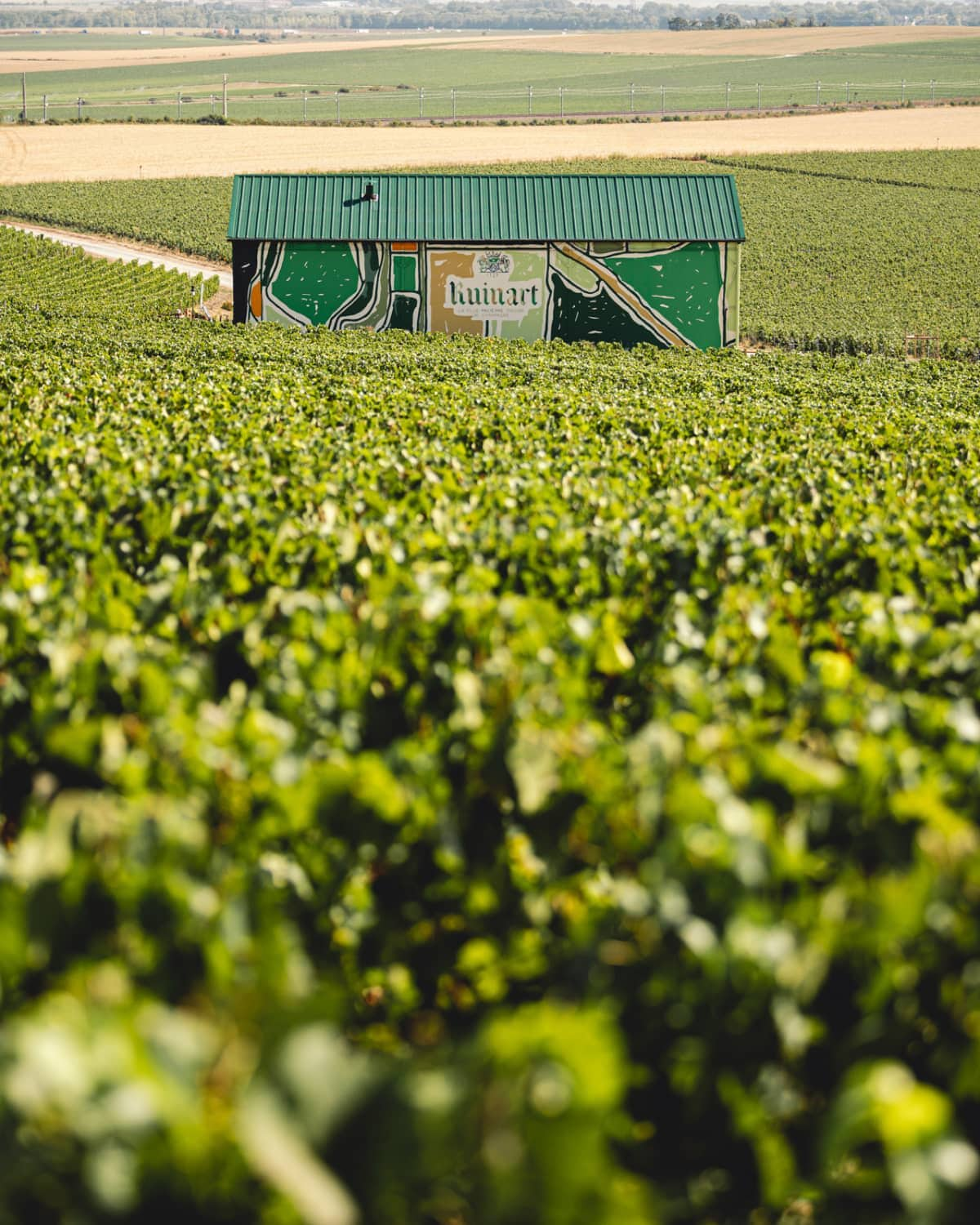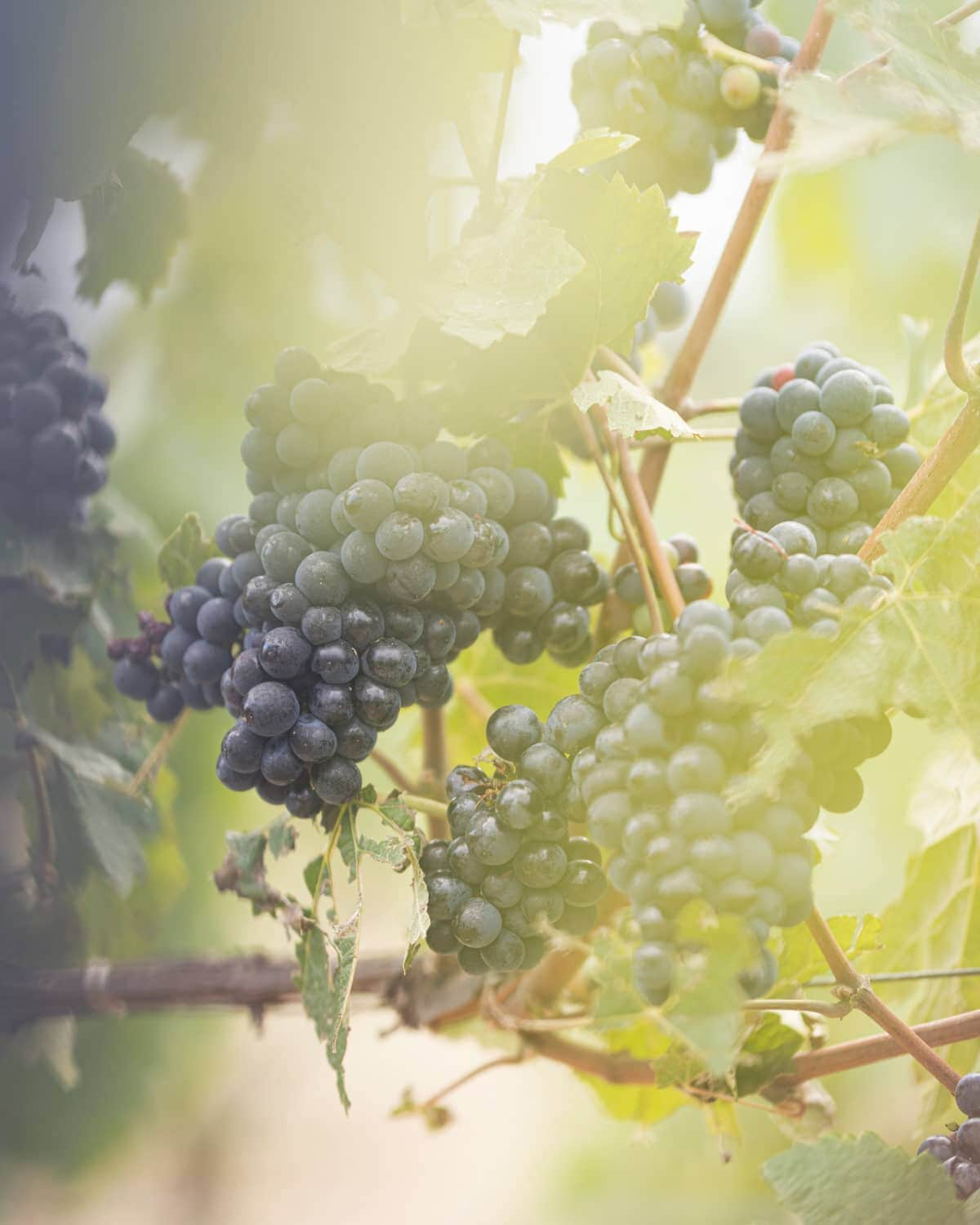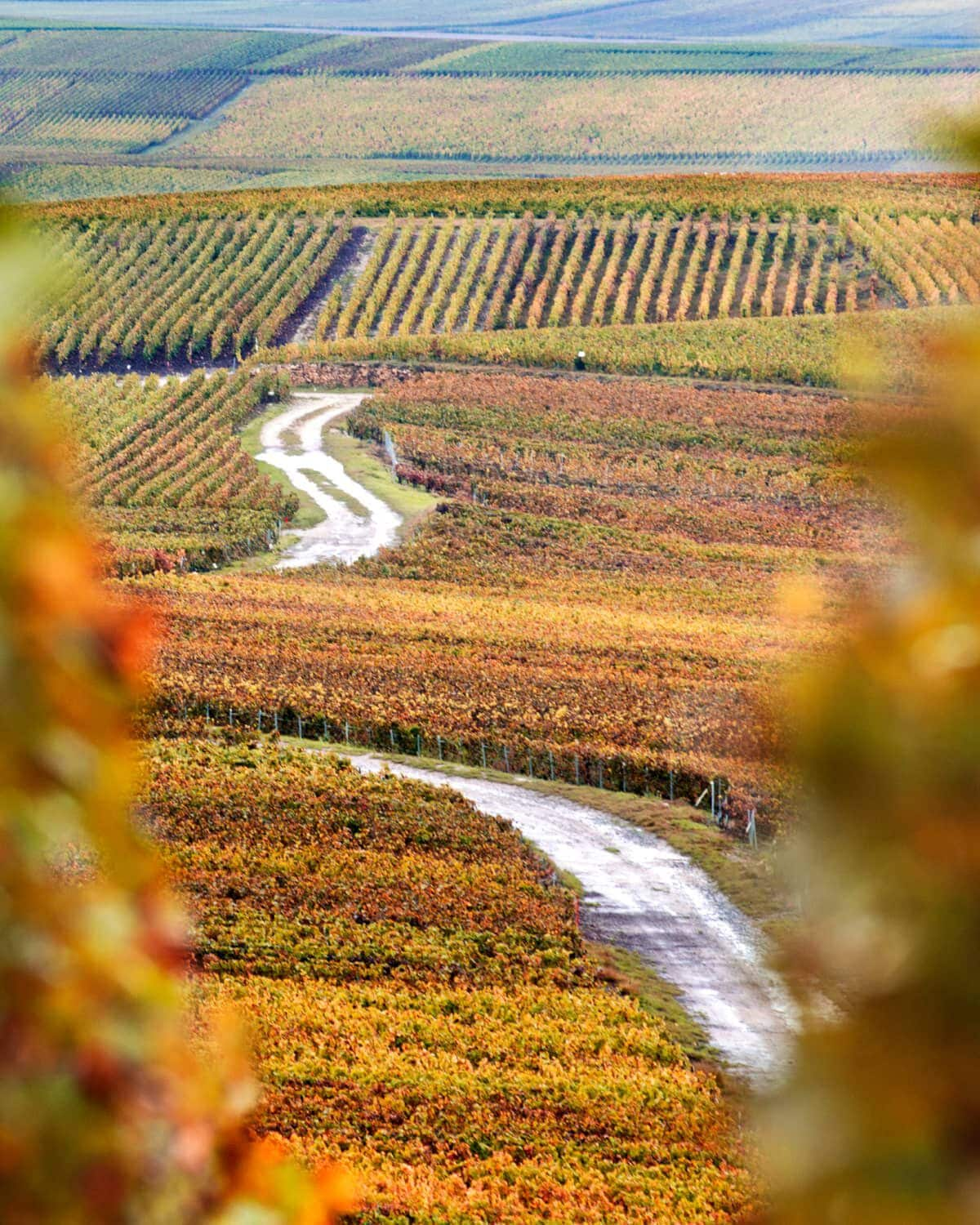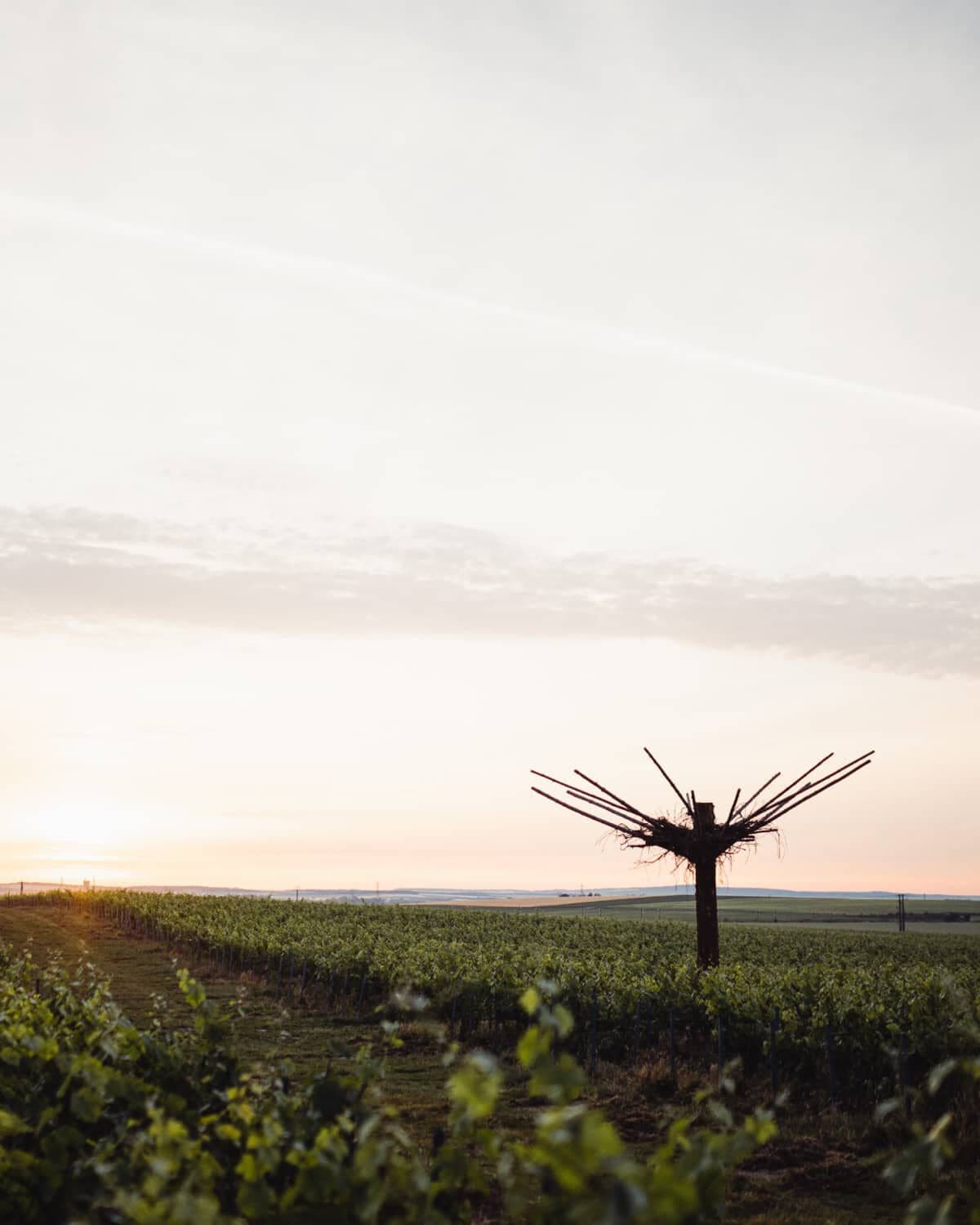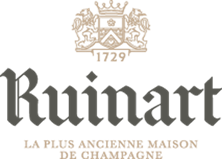
Ruinart supports the moderate consumption of wine and spirits through Moët Hennessy, a member of Wine in Moderation.
PLEASE DRINK RESPONSIBLY

Ruinart supports the moderate consumption of wine and spirits through Moët Hennessy, a member of Wine in Moderation.
PLEASE DRINK RESPONSIBLY
Ruinart carefully cultivates its vines, respecting ancestral traditions. Three grape varieties make up the blends of its cuvées: chardonnay, the Maison's emblem, pinot Noir and pinot Meunier. The grapes come mainly from the Côte des Blancs, where chardonnay is king, and from the northern slopes of the Montagne de Reims. Here, the grapes benefit from optimal sunshine, cultivated on chalky soils that perfectly regulate the vines' water status. This terroir produces taut, chiselled, powerful wines.
The vineyards of Sillery and Taissy hold a special place in the history of Maison Ruinart.
Sillery, the only terroir classified as a Chardonnay Grand Cru near Reims, is one of the oldest Grand Crus on record, and is still owned by descendants of the Ruinart family.
A few kilometers away, the vineyard of Taissy, classified as a Premier Cru, has the distinction of being mentioned in the archives as early as 1733, 4 years after the creation of the Maison. This 40-hectare parcel, a rare unit in Champagne, is planted mainly with Chardonnays aged between 6 and 18 years. The Maison is piloting an ambitious project to promote biodiversity, based on the principle of vitiforestry and carried out with Reforest'Action.
Since 2014, these historic vineyards have been certified High Environmental Value and Sustainable Viticulture in Champagne. A significant step in favor of biodiversity, underlining Maison Ruinart's commitment to sustainable viticulture.
Part of the Ruinart style lies in the balance of the blend, but also in the way the vines are grown.
In recent years, the impact of global warming on vines has accelerated. The Maison must accompany nature at the mercy of an unpredictable climate. Since 2003, when France suffered an alarming heat wave, Champagne has experienced six early harvests, starting in August instead of September. An upheaval that demands redoubled care and delicacy.
A pioneer in sustainable viticulture, Ruinart has made the fight against global warming one of its top priorities. Since the 2000s, it has been gradually transforming its practices with the aim of controlling the environmental impact of each stage in the production of its cuvées.
At the end of February, the vines emerge from their winter slumber, signalling the start of a new vegetative cycle. In March, as the fine weather returns, the first buds appear. April sees the first leaves and May the first inflorescences.
In June, the flowers open to reveal the future seeds: this is flowering, which lasts around ten days. This stage provides information on the date of the next harvest.
During the summer, the berries change color and become loaded with sugar. After checking their ripeness, the oenological team determines the precise date for the start of the harvest. Bunch by bunch, the grapes are picked entirely by hand. It's a delicate gesture that helps preserve the fruit until pressing.
As autumn arrives, the vine builds up its reserves before resting for the winter: as the sap flows down to the roots, the leaves change color and fall.
As an inspiration source for artists in residence in Reims, the vineyard becomes a subject of creative exploration. Within the framework of these annual programs, Ruinart invites a curated selection of talents to delve into its cellars and vineyards, envisioning artistic reinterpretations of its heritage.
In September 2029, the House will celebrate its 300th anniversary. As part of the Countdown, it unveils a new artistic or architectural project in Reims every year, blending innovation, creativity, and sustainability to enrich its symbolic heritage through on-site art installations.
In 2021, Argentine artist Tomás Saraceno placed nature observation at the heart of his work. Through his piece "Movement," he depicted the impact of climate change on the vine using an Aérocène's flight, harnessing the power of the sun and wind.
In 2022, with "Habitats," land art pioneer NILS-UDO brought his creativity to Ruinart's Taissy vineyard, crafting three giant sculptures from wood and vine shoots. Using the vine stocks and tendrils removed from the vitiforestry project led by the House, he fashioned nests where local wildlife is encouraged to settle in.
